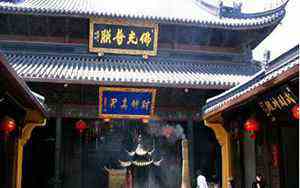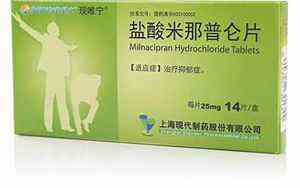
“年夜饭”用英语怎么说?这份菜单太涨姿势了!
早在南北朝时期,著名学者宗懔就在自己的著作《荆楚岁时记》中对年夜饭做了这样的记载:“暮家家俱肴蔌,诣宿岁之位,以迎新年,相聚酣饮。” 吃年夜饭的习俗已流传数千年,对每个炎黄子孙而言都意义深远。随着科技的发展,年夜饭的形式也在不断发生变化,如今的中国人既可以在家自制年夜饭,也可以在网上预约大厨上门服务,但始终不变的,是年夜饭的味道,和饭菜中凝聚的浓浓亲情。
Sumptuous and culturally significant, the family reunion dinner, served on Spring Festival eve, is a 4000-year-old tradition passed down through generations in China. A hearty feast, the dinner is also a historical record of Chinese traditions and culture, with every dish containing its own auspicious symbolism.
中国地大物博,每个地区的年夜饭都有自己的特色,每家的春节餐桌也不尽相同。小编选取了几种大家耳熟能详的年夜饭招牌菜,为大家制作了一份中英文双语的“人民网年夜饭菜单”,以后再向外国友人介绍我们引以为豪的文化传统时,就不会再词穷啦!
Though different regions have their own unique menu for the reunion dinner, all dishes are created to give blessings for the coming year. Preparing such a grand meal isn’t easy, but with our exclusive New Year menu, we hope to ensure your food and décor are on point this year!
饺子
对于生活在北方的中国人而言,饺子是必备的年夜佳肴。饺子谐音“交子”,蕴含着辞旧迎新,拥抱未来的美好愿景。饺子的馅料也很有讲究,比如白菜馅预示着“百财”,而韭菜馅意味着“长长久久”。
With a history of more than 1,800 years, dumplings, also known as jiaozi (饺子) in Chinese, are a traditional dish eaten on Spring Festival eve, especially in northern China.
In Chinese, the pronunciation of dumplings sounds the same as 交子 (jiaozi). 交 means “exchange,” while 子 means the midnight hours. Combined, jiaozi means the exchange between the old and new year, while people who eat dumplings are said to leave the past behind, and embrace a new year.
Traditionally, dumplings are made to look like ancient Chinese gold ingots, which were at one point used as currency. Popular fillings include Chinese cabbage, which represents wealth, as well as green leeks, which symbolize everlasting affluence. Rumor has it that the more dumplings you eat during the reunion dinner, the more money you will make in the coming year.
In many regions, a white thread is wrapped inside one of the dumplings, and the person who picks it is believed to gain longevity in the future. Coins are also placed inside some dumplings, and those who choose them are supposed to become rich in the coming year.
In addition to its delicious flavor, the process of making dumplings is also a family custom during the Spring Festival. During dinner preparations, all family members will wrap dumplings together, while in specific regions, the daughter-in-law must make dumplings for the older family members to be considered part of the family.
Recipe丨Dumplings
Flavor: salty
Cooking method: boil, steam or simmer
Cultural Connotation: Jiaozi means sending a farewell to the past, as well as receiving wealth and happiness in the coming year
汤圆
与北方人不同,南方许多地区在春节期间会吃汤圆。汤圆寓意团圆,浑圆的形状也被视为家庭幸福,和和美美的象征。需要注意的是,北方的元宵和南方的汤圆还是有差异的。从做法上看,元宵通常用干粉滚制而成,汤圆则是用糯米烫揉后的湿粉包成。元宵通常是在春节的最后一天,也就是元宵节食用,而汤圆则多出现在年夜饭的餐桌上。
Glutinous rice balls, or Tangyuan (汤圆), is a sweet dish served during the Spring Festival in southern China. Unlike dumplings, the dough of Tangyuan is made using glutinous rice powder and has a sweet filling made of ingredients such as red bean paste, fruit and brown sugar.
The rice balls are usually cooked and served in boiling water with fermented glutinous rice and sweet ginger syrup, though in some regions, they can also be deep-fried to add a stronger flavor. Glutinous rice balls are usually shared among all family members. Their round shape signifies family togetherness, while tangyuan is a homophone for union (团圆-tuanyuan).
Popular in both northern and southern China, glutinous rice balls may take different forms or names in different regions. In the north of China, this dish is usually called yuan xiao (元宵) and is served during the lantern festival, the 15th day of Chinese New Year, while in south China, the rice balls are typically served in a savory soup made with Chinese radish and homemade fish cake on New Year's Eve.
Recipe丨Glutinous rice balls
Flavor: sweet
Cooking method: boil or fry
Cultural Connotation: the round shape represents completeness and reunion
蔬菜佳肴
蔬菜是年夜饭桌上必不可少的美味。许多蔬菜因谐音吉利,而成为中国人喜爱的春节食材。
在中国北方大部分地区,白菜是必不可少的年夜饭菜肴。白菜谐音“百财”,有着财源滚滚,八方来财的美好寓意;韭菜则谐音“久财”,意味着长长久久,幸福美满。
在南方,莲藕和莲子是春节餐桌上的常客,因为莲藕和莲子寓意多子多福,家运昌盛。
Vegetables play a significant role on the reunion dinner table. Traditionally, all vegetable dishes have related to a play on words, with every recipe containing a good wish for the coming year.
Though the choice of vegetables may differ in different regions, several familiar vegetable dishes are eaten across China during the new year. For instance, one recipe including Chinese cabbage and lotus seeds is popular during the Spring Festival, as in Chinese, cabbage is a homophone of “unlimited wealth,” while lotus seeds represent a blessing for many children and a healthy family.
In south China, bamboo shoots are considered a lucky vegetable dish for the reunion dinner, as they represent longevity as well as good fortune. In north China, the leek is typically made into a salad or a filling for dumplings, because it sounds similar to 久, meaning everlasting fortune.
Recipe丨Vegetable stew
Flavor: sweet, salty or spicy
Cooking method: boil, fry or steam
Cultural Connotation: a symbol of good fortune, health, and happiness
鲜鱼
无论南方北方,年夜饭上一定会有一道鲜鱼佳肴。北方人喜食油炸带鱼,南方人热爱蒸鱼鱼羹。中文中“鱼”和“余”发音相同,后者有富余之意。在中国人看来,凡事留有余地,日后方得进益,因此春节吃鱼也是完全可以理解的了。
For every Chinese family, fish is an indispensable part of the reunion dinner. In Chinese, fish has the same pronunciation as 余 (yu), which means surplus. For Chinese people, it is always good to have saved something by the end of the year, so that more good fortune will follow.
The typical blessing of the fish dish is 年年有余, an idiom wishing people a surplus of food and money in the new year. It is also essential to choose the right type of fish. The Crucian carp and Chinese mud carp are most often used in the reunion dinner, as the first character of crucian carp (鲫鱼, jìyú) sounds like the Chinese word 吉 (jí, good luck), while the Chinese word for mud carp has a similar pronunciation to the word for gift.
When eating the fish dish, the head and the tail must be left intact. This practice echoes the Chinese idiom 有头有尾, with the literal meaning “having both head and tail,” which represents the idea of concluding the unfinished, as well as moving towards a positive start.
During the reunion dinner, the fish head must be placed toward elders or distinguished guests to show respect, while those sitting facing the head and tail of the fish should drink and toast together, to bring good luck to all family members.
Recipe丨New year fish
Cultural Connotation: a symbol of surplus
红烧肉
红烧肉的做法因地制宜。以江浙名菜东坡肉为例,文豪苏东坡提出烧猪肉加酒小火慢煨的做法,做出的红烧肉味道软糯,酒香醇厚。湖南名菜毛氏红烧肉则摒弃酱油上色的传统做法,改用炒好的焦糖上色,口感绵软,滋味鲜美。
Red braised pork belly is a traditional Chinese dish with a history of over 1,500 years. In his famous book, Qi Min Yao Shu, agronomist Jia Sixie explained the dish’s cooking process, noting that this dish was a firm favorite during the 5th century.
The dish ordinarily uses pork belly, ginger, aromatic spices, sugar, soy sauce and star anise. The meat is cooked until the fat and skin are gelatinous, with a soft and oily flavor.
Many Chinese gastronomes have improved the flavor of traditional red braised pork belly. Su Dongpo, one of the most prominent Chinese writers living in the Song Dynasty, added wine, so that the flavor of the pork is oily but not greasy, with a subtle fragrance. Chinese leader Mao Zedong also liked red braised pork belly, though he preferred to eat it without soy sauce, favoring extra sugar and salt to replicate soy's rich flavor.
This dish is a reminder of Chinese idiom 红红火火 (red and fire), which means to prosper as much as red fire.
Recipe丨Red braised pork belly
Flavor: sweet or salty
Cooking method: red cook
Cultural Connotation: a symbol of prosperity and a booming career
福果
春节期间不可或缺的饭后餐点就是各种拥有吉祥寓意的水果,也就是福果了。最常见的福果包括福橘和柚子。中学语文课本中有一篇鲁迅先生写的《阿长与山海经》,其中就提到过年期间吃福橘的习俗。福橘和柚子都是圆形的水果,象征着家族和睦,团团圆圆。橘谐音“吉”,意味着来年吉祥如意,柚谐音“又”,意味着来年福气不断,都是吉祥的水果。
Certain fruits are eaten during the Spring Festival, especially tangerines and pomelos. Round in shape and golden in color, these fruits are believed to bring abundance to the family, while their pronunciations also sound lucky to Chinese people.
In Chinese, tangerine (桔, ju) sounds similar to the Chinese word for luck (吉, ji), while the Chinese for pomelo (柚, you) sounds like the word for “again” (又, you), thus eating both fruits means continuous prosperity and good luck.
2019年春节将至
各国驻华大使提前给大家拜年啦!
版权声明:如涉及版权问题,请作者持权属证明与本网联系
来源: 人民网
儿童画教程 | 新年主题画《喜庆团圆年夜饭》
课程准备
1.课程类型 综合创意美术课程
2.参考课时 90分钟
3.工具材料 素描纸、记号笔、水彩笔
课程构思
春节是我国的传统节日,也是最隆重、最热闹的节日。关于春节的传统习俗有许许多多,其中吃年夜饭就是其中之一。年夜饭相比以往的饭菜,自然要丰富很多,人们会早早地便开始忙碌准备,准备丰盛的饭菜。在年夜饭的菜品中,人们还会为一些菜赋予美好的寓意:比如鱼类表示年年有余,汤圆表示团团圆圆、生菜表示生财、腐竹代表腐竹等等,这也体现着人们对来年美好生活的期许。随着社会的发展、人们生活水平的提高,年夜饭也越来越丰富、越来越多样化,鸡鸭鱼肉、甜品小吃、酒水饮料、蔬菜海鲜......在今天的美术课程中,我们就是结合自己的生活体验和丰富的想象力,设计一盘丰盛的年夜饭。我们一起来看看参考的教程吧!
情景描述
大年三十,家人们常常会团聚在一起,共享丰盛美味的年夜饭。吃年夜饭作为春节传统习俗之一,小朋友们一定非常喜欢,那么,在你的餐桌上,你希望出现哪些美味的菜品呢?展开你的想象画下来吧!
教学重难点
1、联系生活体验,启发小朋友们的创造性思维,画出各种不同的食物。
年夜饭丰盛多彩,有蔬菜、有肉类、有小吃、有饮品,那么年夜饭中留给你印象最深的是什么菜呢?你喜欢吃哪些菜呢?用笔画下来。在绘画时还可以通过人物手的表现,体现用餐时的氛围;绘画时要注意人物手与菜在空间上的前后遮挡关系。
2、对画面进行色彩的搭配,运用丰富鲜艳的色彩表现食物的美味和新年的热烈氛围。
在表现菜品的时候,可以联系生活实际,想一想该怎样处理不同食物的色彩,也可以运用充满形象力的色彩进行表现,使食物看起来美味可餐;在表现人物衣袖的时候,可以运用彩色线描的形式加以装饰。最后将红色的桌布、黄色的背景进行搭配,使画面热烈喜庆。
绘画教程
准备一张素描纸和一支记号笔
从不同角度画出人物的手臂
运用冷暖的色彩
为人物的衣袖搭配五彩的花纹
用记号笔画出桌面上大大小小的盘子
注意画面之间的遮挡关系
展开丰富的想象力和创造力
在盘子里画出不同的食物
为食物涂上颜色
并为桌面和背景搭配喜庆的色块
课后点评
在今天的美术课程中,我们绘画表现的内容是一桌丰盛的年夜饭。在绘画中,启发小朋友们联系自己的生活体验,展开丰富的想象力和创造力,运用线条集合色彩表现各种不同的食物以及用餐时的场景,锻炼了小朋友们组织画面、线条运用、色彩表现的能力。在绘画中,小朋友们围绕主题进行了大胆的创作,画面中的食物丰富多彩,体现出了食物不同的特征和鲜明的色彩美感;在人物的衣袖的表现上,线条、图案、色彩的组合,呈现出强烈的装饰美感。整幅作品色彩明快、富有变化和对比,洋溢着热烈喜庆的新年气息。



























